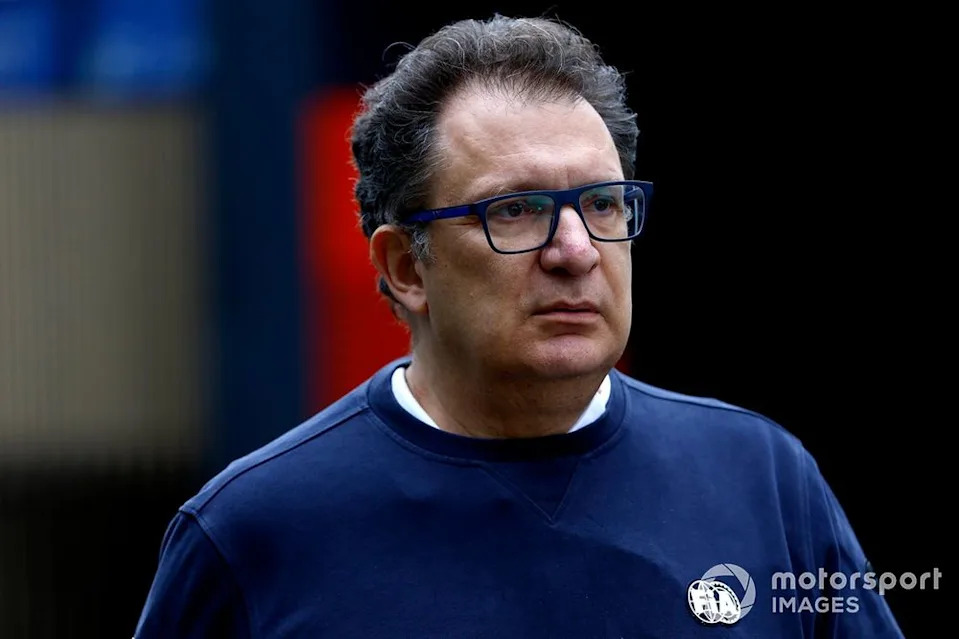FIA single seater director Nikolas Tombazis expects the brand new Components 1 laws for 2026 to ship “extra thrilling racing” as a internet results of the assorted modifications the governing physique is making to the vehicles.
For 2026, with an even bigger electrical part to their hybrid engines, in addition to using sustainable fuels and energetic aerodynamics.
Commercial
The latter includes opening each the entrance and rear wings on the straight, making the present DRS system out of date. As a replacement, trailing vehicles will have the ability to get a pace benefit on the rivals they’re chasing by means of an .
And whereas the brand new technical laws on each the ability unit and chassis aspect could nicely result in a a lot bigger unfold between groups at first, Tombazis thinks the brand new ruleset will create a greater present.
“Clearly, with new laws one expects initially a barely greater unfold of the grid, however we do anticipate from an aerodynamic viewpoint, vehicles to have the ability to observe one another a lot nearer than now,” he mentioned.
Commercial
“The wake traits are a lot improved and we really feel we have realized so much from the 2022 vehicles to implement a number of these learnings for the aerodynamic laws this yr.
“The transition from utilizing DRS to power because the software to help overtaking – that is all going to vary the character and make it extra unpredictable. That, along with the completely different aerodynamics, I believe are going to make racing finally extra thrilling.”
Nikolas Tombazis, FIA Single Seater Director
Nikolas Tombazis, FIA Single Seater Director
Tombazis believes the distinction with the present vehicles might be starker as a result of groups have all clawed again a lot downforce for the reason that creation of the 2022 laws. On this time, the affect of soiled air has additionally regularly worsened.
Commercial
“Let me say, to start with, that the 2022 vehicles began off with a major enchancment of their wake traits. I don‚Äôt keep in mind the precise numbers, however the lack of downforce at 20 metres behind went from about 50% on the earlier era of vehicles to about 80 or 85% to start out with on the 2022 vehicles. After which that regularly decayed throughout the regulation cycle to what it’s now, which once more I‚Äôm not totally positive¬Ý– however we’re in all probability speaking extra like 70%.
“This is the reason we see that vehicles are presently struggling a bit extra now following one another than in 2022, albeit nonetheless higher than it was in 2021. We consider that the beginning of the brand new cycle might be extra like 90% or one thing like that. So we consider it‚Äôs going to be higher than it‚Äôs ever been.”
One other component that may create variance between groups and drivers isn’t just the completely different engine {hardware}, however the way in which by which every energy unit is being run and the way the power is managed. It’s believed two equivalent energy models can fluctuate in efficiency to the tune of a number of tenths per lap purely all the way down to how the driving force really deploys the power.
Commercial
“If a driver deploys his power otherwise and also you’re a little bit bit inefficient in your use across the lap, an overtake is definitely fairly sensible or possible,” mentioned Pink Bull’s chief engineer Paul Monaghan.
“So, I believe the scatter of automobile utilization and efficiency may very well be better than we presently have. And as such, the racing might be completely different in that we will not be as closed up as we presently are¬Ý– however we’ll see. And then you definitely’ve obtained the uncertainty of fully new vehicles, new electronics, and can all people make it to the top? We’ll discover out. It is unpredictable in the intervening time.”
Learn Additionally:
Commercial
To learn extra Motorsport.com articles .







